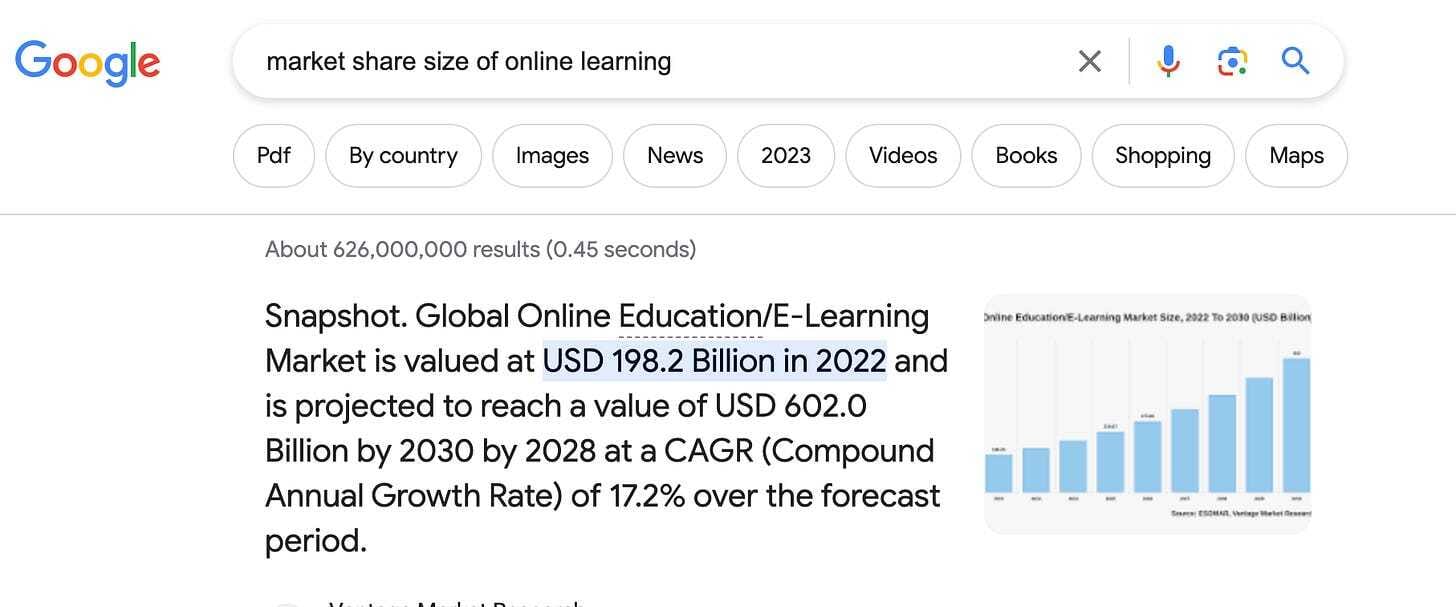
So over the last 5 years of doing business consulting and providing marketing students to hundreds of people, MOST of the time a small business is underperforming because of two reasons:
Lack of clarity and vision for the business
Little to no market research
So today we’re talking about ONE aspect of market research. I want to slowly walk these topics to give you time to master one concept before moving on to the next.
Thanks for reading Per My Last Email! Subscribe for free to receive new posts and support my work.
Upgrade to paid
What is Market Research?
Market research (or marketing research) is any set of techniques used to gather information and better understand a company's target market. Businesses use this information to design better products, improve user experience, and craft a marketing strategy that attracts quality leads and improves conversion rates.
The more deep and more thorough your market research is the better you understand your business, your business model, and the customers/clients you serve.
So Boom you starting a business and now it’s time to do market research, what do you do next?
Let's first start with determining the size of the market in which your business will live.
For this purpose of this, we’ll use my new business Feliberty.
Business Name: Feliberty
What the business does: Feliberty is an educational marketplace and learning platform for people of color catered to helping them start, grow and scale their businesses.
Type of Business Model: B2C (Business to Consumer) meaning our business sells directly to people.
Market: Education/E-Learning
Google: “What market share size of online learning?”

Now you see where it says a CAGR of 17.2%? this is good number.
Mendez, wtf is a CAGR?
Compound Annual Growth Rate (CAGR) is a way to measure how something, like a business or investment, has grown over time. It tells us the average rate at which something has been growing each year.
To calculate the CAGR, we need two important numbers: the starting value (let's call it the beginning amount) and the ending value (let's call it the final amount). The CAGR formula is as follows:
CAGR = (final amount / beginning amount) ^ (1 / number of years) - 1
Let's break it down step by step:
First, we divide the final amount by the beginning amount. This gives us a ratio of how much it has grown.
Next, we take that ratio and raise it to the power of 1 divided by the number of years. This step helps us find the average growth rate for each year.
Finally, we subtract 1 from the result to get the CAGR.
For example, let's say you have $100 at the beginning of the year, and by the end of the year, it has grown to $120. To find the CAGR over that year, we can use the formula:
CAGR = (120 / 100) ^ (1 / 1) - 1
Simplifying the equation, we get:
CAGR = 1.2 ^ 1 - 1 CAGR = 1.2 - 1 CAGR = 0.2 or 20%
So, in this example, the CAGR would be 20%, meaning the money grew by an average of 20% each year.
CAGR helps us understand how quickly something is growing and is often used to compare the growth rates of different investments or businesses over the same period of time.
So as you can see a CAGR of 17.2% means that this industry is growing at a rapid pace which is great for me because my business is inside of a market with a lot of growth opportunities.
A good CAGR for an industry is 8% to 12% for large companies, while for high-risk companies, a good CAGR is between 15% to 25%.
Upgrade to paid
What happens if I do my research and my market size is small and a the CAGR isn’t good?
If your research indicates that the market size for your product or service is small and the Compound Annual Growth Rate (CAGR) isn't promising, it can pose challenges for your business. Here are a few potential implications:
Limited growth opportunities: A small market size suggests a limited customer base and potentially restricted growth opportunities. With fewer potential customers, it may be more difficult to achieve substantial sales and revenue growth over time.
Intense competition: In a small market, competition among businesses may be more intense as each player vies for a share of the limited customer base. You may need to differentiate your product or service significantly to attract customers away from existing competitors.
Difficulty attracting investment: Investors often seek opportunities with high growth potential. If your market size and CAGR are not favorable, it could be challenging to attract external funding or secure investment to support your business's growth plans. ( this if you plan to sell your business by way of an exit)
Limited scalability: With a small market size, scaling your business and expanding operations may be more challenging. Scaling often requires reaching a larger customer base and achieving substantial revenue growth, which may be hindered by the limited market potential.
Pricing and profitability challenges: A small market may limit your ability to command higher prices for your product or service. This can impact your profitability and make it more challenging to achieve sustainable margins.
However, it's important to consider other factors alongside market size and CAGR. A small market doesn't necessarily mean your business cannot be successful. If your target market is highly niche or specialized, you can still build a profitable business by catering to the specific needs of that market segment.
Additionally, it's crucial to evaluate other aspects such as customer demographics, purchasing power, market trends, competitive landscape, and potential for market expansion. Conducting a comprehensive analysis will help you determine the viability of your business idea, explore strategies to target your niche market effectively, and identify opportunities for growth and differentiation within that market.
Now do you see why this is so important when you’re starting a business?
